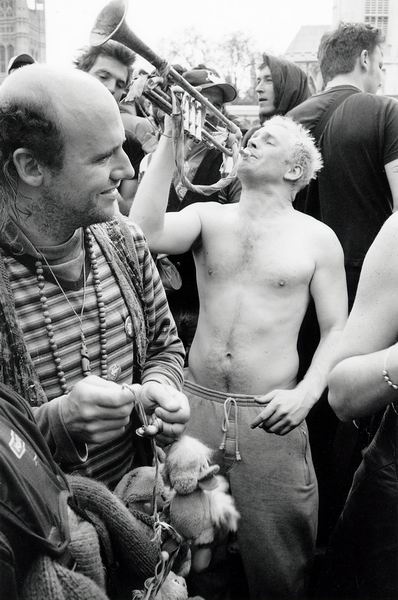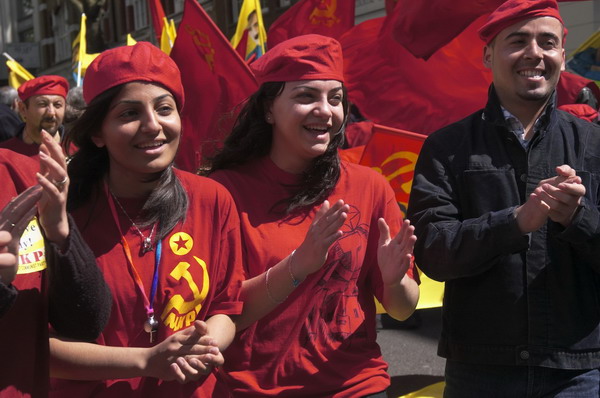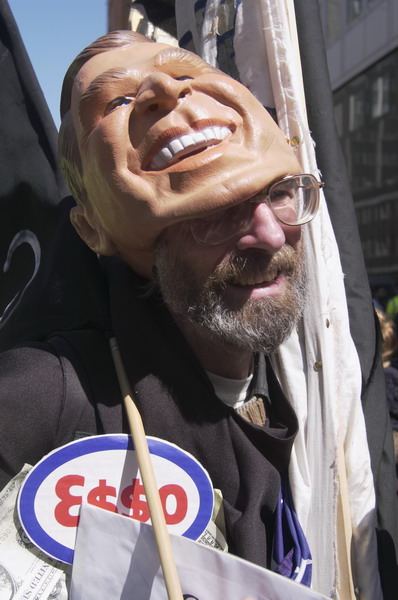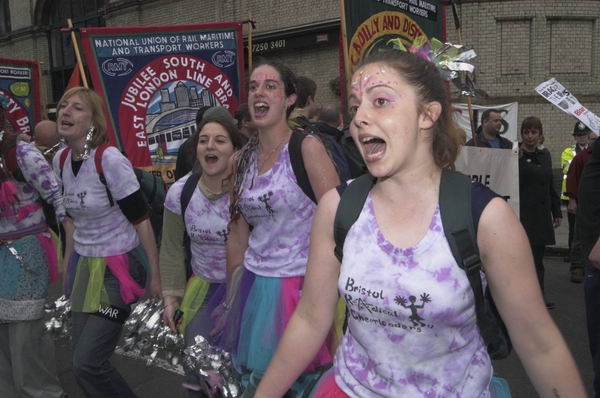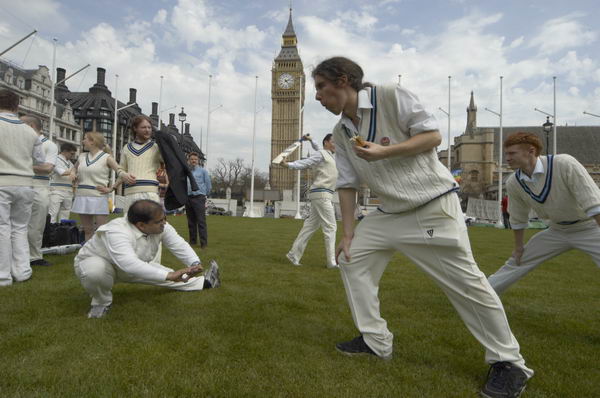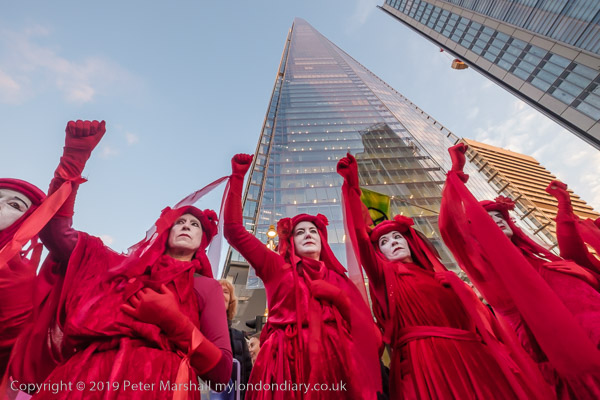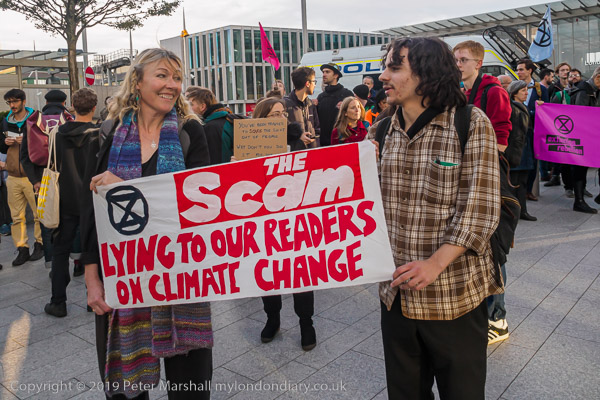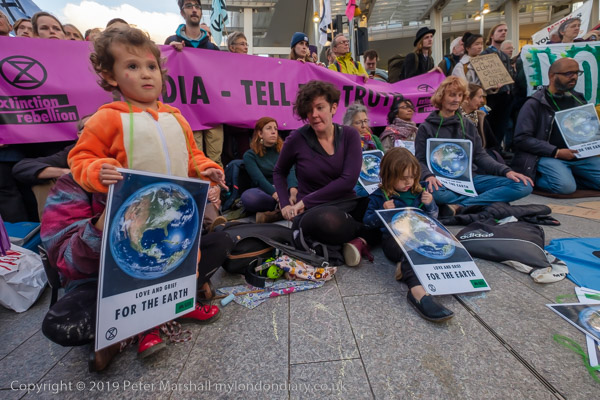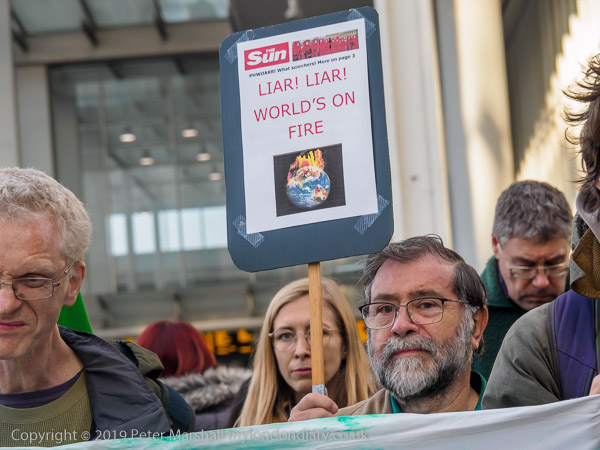A fairly random selection of pictures I like from my coverage of May Day events in London in 2007.
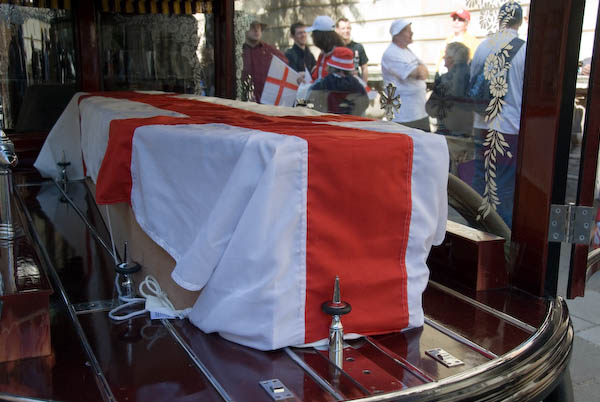
Unusually my photographic day began in Whitehall where a small group of what I described as “the more eccentric elements of middle england” had gathered with a horse-drawn hearse and a dragon to take a coffin draped in a St George’s flag to Downing St, celebrating 300 years of union with Scotland by asking for English devolution. On My London Diary I wrote (and all in lower case):
i never did find out what the barnett formula they were against was, but i’m sure that these were people in favour of warm beer, cricket and morris dancing as well as good manners. st george didn’t look like the type to scare dragons (and the dragon wasn’t either scary or easy to photograph.)
http://mylondondiary.co.uk/2007/05/may.htm
but i’ve never really thought of myself as being very english. like most of the english, most of my family came from somewhere else at some time or other. i only knew one of my four grandparents and i’m not convinced she spoke english, but then she didn’t say much either.
apart from my lack of sporting skills i could have qualified for at least two of our national sides (so perhaps after all i could have played cricket for wales.) if i ever think of myself know as having any kind of cultural identity now (and it’s a very un-english thought) it would be as a londoner. maybe
From there I made my way to Clerkenwell for the annual London May Day march, dominated as usual by large groups from London’s ethnic communities.
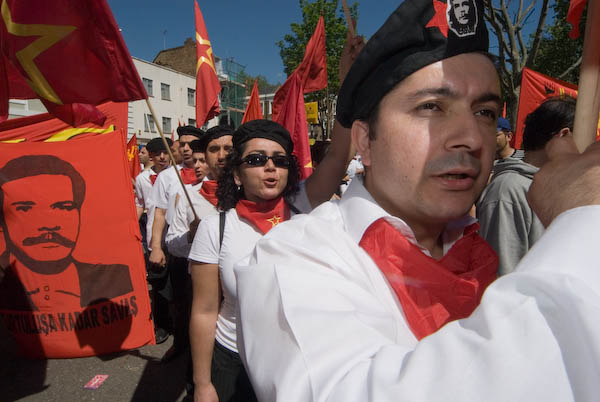
Also on the march were trade unionists with their banners and campaigning groups such as ‘Stop The War’. Among other groups you can see in my pictures are Chagos Islanders and Gate Gourmet strikers who were protesting at being betrayed by their union, the T&G W U.
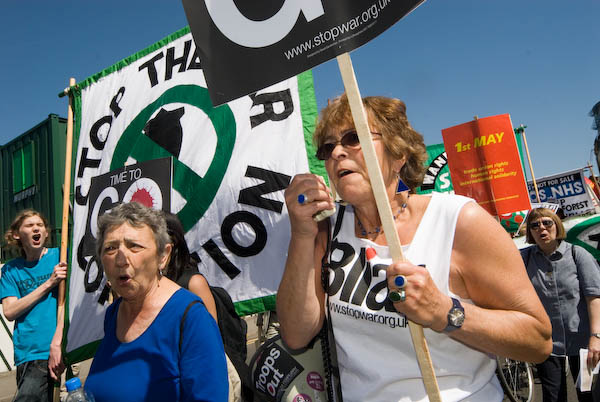
The marchers went on as usual to Trafalgar Square where a man stood with a whistle and a sign to welcome them.
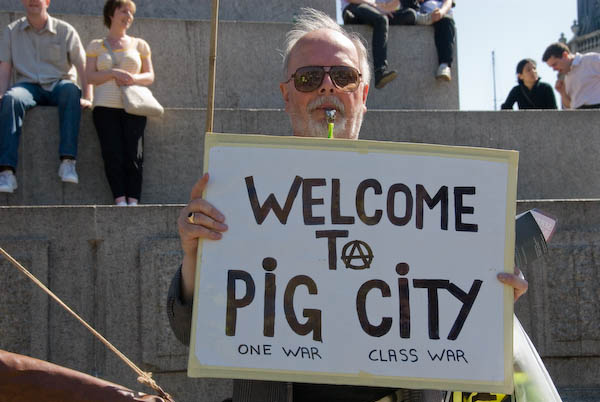
I went on to Canary Wharf, where the Space Hijackers, outnumbered around ten to one by police, were holding their ‘Booted and Suited’ party in Reuters Square
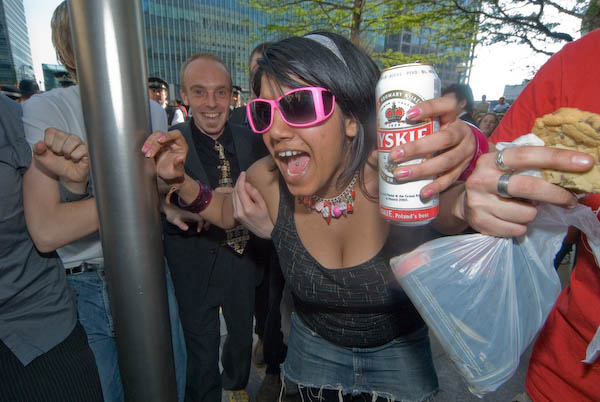
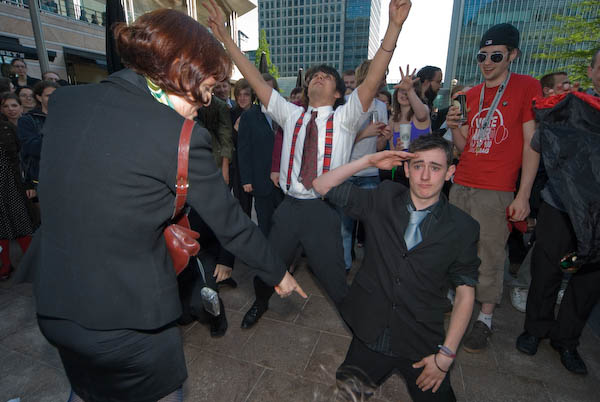
And the day ended with a little police sadism:
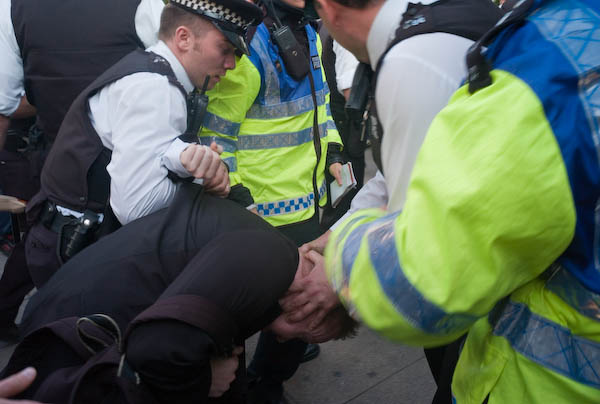
A police officer applies a dangerous ‘pain compliance’ hold cutting blood supply to the brain of a man who wasn’t resisting arrest, while another officer forces his hand up behind his back. The man was then put in a police van and driven away. He had apparently ignored a police order to move on.
The whole of the Canary Wharf area is one of those increasing parts of the city which are private fiefdoms, with the public only allowed access to serve the needs of capital as workers or consumers. It has its own security service, but on this occasion only their boss, wearing a suit, was in evidence, coming to talk with protesters and police. It dresses its security officers in uniforms which closely resemble those of police officers, in a way that seems to be an offence under the Police Act 1996. Having invited several hundred police officers to the event I imagine they had decided having the security officers there would be too confusing.
All photographs on this and my other sites, unless otherwise stated, are taken by and copyright of Peter Marshall, and are available for reproduction or can be bought as prints.
